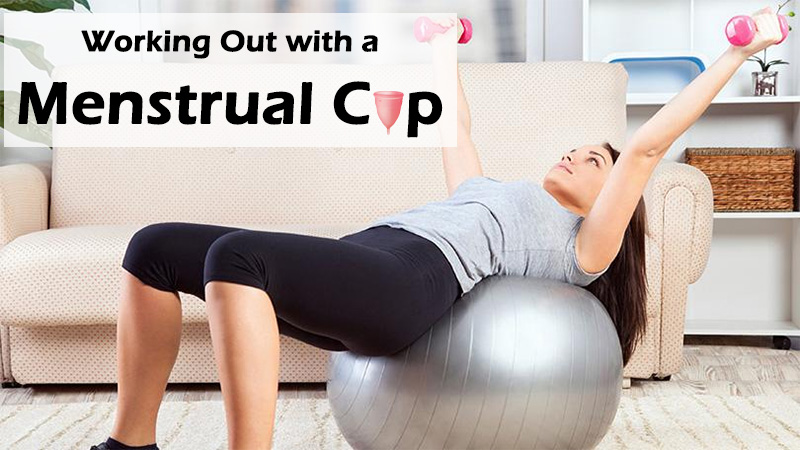What You Need to Know about Working Out with a Menstrual Cup
Periods have a knack of appearing at precisely the wrong moment, like before a hot date or when you’re competing in a grueling 10k trail race. You’re a woman. Periods come with the territory. You know you shouldn’t let a pesky period slow you down, but it sure is hard!

There is always that lingering fear of embarrassment should a tampon or pad leak, especially when wearing light-colored sports gear. Imagine how embarrassing it would be if you bent over to stretch your hamstrings at the gym, only to belated discover your period had arrived a day early…
The good news is that menstrual cups take away a lot of the worry for fit and active women. You can workout without fear of stains, leaks, and all manner of embarrassing mishaps. If this sounds fantastic, read on to find out what you need to know.
What are Menstrual Cups?
A menstrual cup is a reusable silicone cup. The cup is designed to be inserted inside the vagina, where it collects menstrual flow. Menstrual cups can hold up to 30 ccs of blood. Most women lose around 80 ccs during a monthly period, so that should put your mind at rest. Instead of throwing a menstrual cup in the trash every four hours, as you would a tampon or pad, all you do is remove your cup, rinse it out, and then reinsert it.
How Effective are Menstrual Cups?
When inserted correctly, a menstrual cup is leak-proof. It can stay in place for up to eight hours, so you can be as active as you like without worrying about changing a tampon or pad. Because a menstrual cup is inserted high up inside the vagina, where there are few nerves, you won’t feel it.
Once the cup is in place, you can get on with your life, worry-free. Normal workouts are a breeze when you use a menstrual cup. You can do squats, jumping jacks, and all manner of intense exercises and your menstrual cup won’t move at all. You can even use a menstrual cup when swimming!
Using a Menstrual Cup
There is a learning curve with a menstrual cup. You will have to get used to inserting your menstrual cup, which may take a couple of cycles to get right. It isn’t difficult, but there is a knack to it. Different brands of menstrual have slightly different designs, so if you switch brands at any point, be aware that your insertion technique may need adjusting.
You’ll know when your menstrual cup is correctly in place, as you won’t be able to feel it at all. If you can feel the cup, remove it and try again. Some designs have a stem at the base, which helps you remove the cup. This can be trimmed once you are comfortable inserting and removing your menstrual cup.
When you remove the cup, empty out the contents in a toilet or down the sink, and rinse it out. If there isn’t a sink, wipe it with some toilet paper. It is a good idea to boil your menstrual cup every so often, to keep it nice and clean.
Outdoor Fitness with a Menstrual Cup
If you take part in outdoor pursuits, such as trail running, mounting biking, rock climbing, etc., don’t worry – you can still use a menstrual cup. In most cases you won’t need to empty your menstrual cup more than twice a day, i.e. once in the morning and then in the evening. However, if you have a heavy flow or you are taking part in a long event, you might have to empty your cup during the day.
Whilst a water source is handy to have, it isn’t compulsory. Carry some wipes so you can clean your hands before removing and reinserting your menstrual cup. Rinse your cup with bottled water or just wipe it clean.
Potential Downsides of a Menstrual Cup
Some gynecologists don’t recommend using a menstrual cup if you have an IUD fitted, so talk to yours if you have any concerns.
Working out with a menstrual cup is a breeze. Whether you are a yoga fanatic, or you run marathons, switching to a menstrual cup means your monthly period does not need to slow you down.



